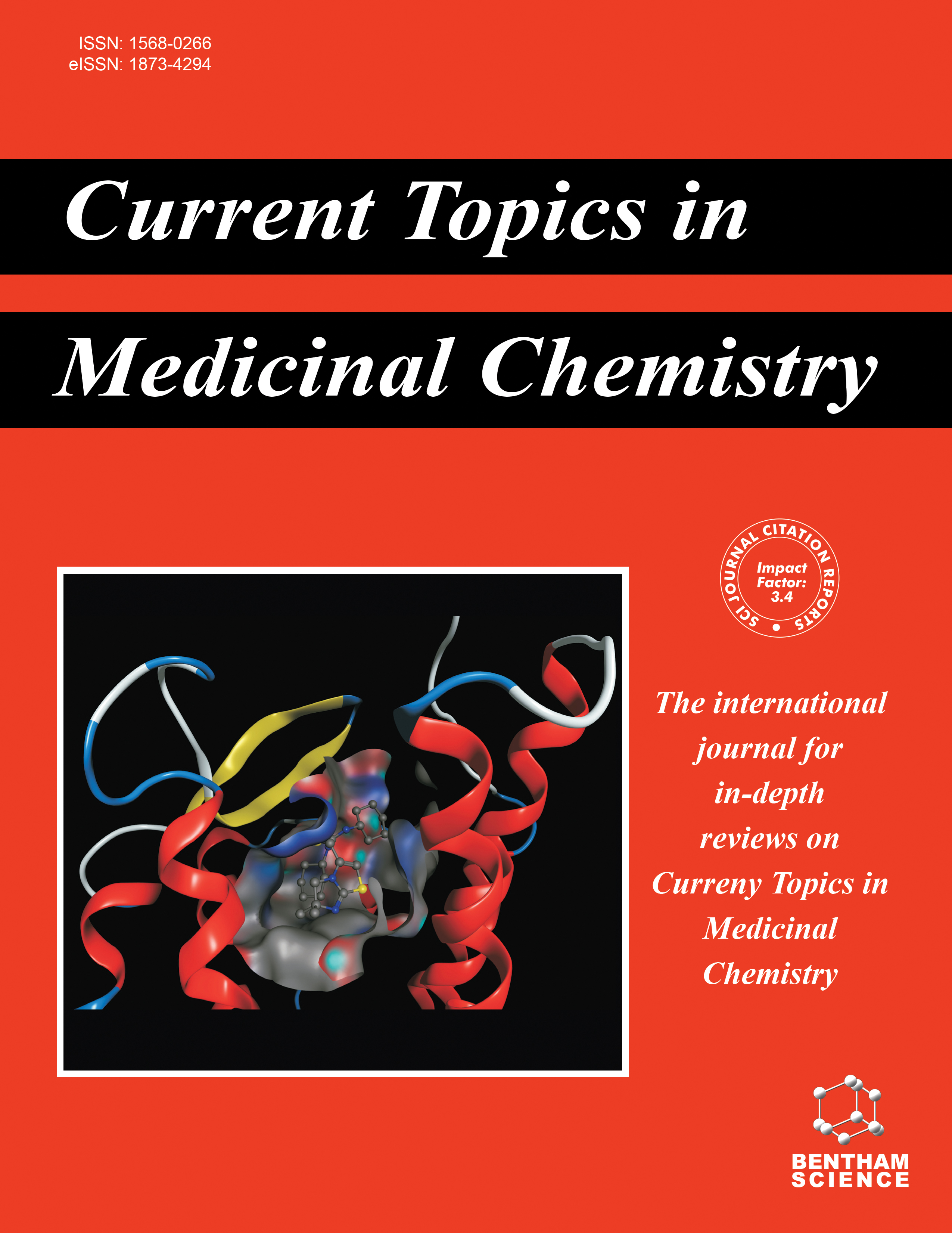- Home
- A-Z Publications
- Current Topics in Medicinal Chemistry
- Previous Issues
- Volume 16, Issue 26, 2016
Current Topics in Medicinal Chemistry - Volume 16, Issue 26, 2016
Volume 16, Issue 26, 2016
-
-
Thiazole: A Review on Chemistry, Synthesis and Therapeutic Importance of its Derivatives
More LessAuthors: Mahesh T. Chhabria, Shivani Patel, Palmi Modi and Pathik S. BrahmkshatriyaThiazole, a unique heterocycle containing sulphur and nitrogen atoms, occupies an important place in medicinal chemistry. It is an essential core scaffold present in many natural (Vitamin B1- Thiamine) and synthetic medicinally important compounds. The versatility of thiazole nucleus demonstrated by the fact that it is an essential part of penicillin nucleus and some of its derivatives which have shown antimicrobial (sulf Read More
-
-
-
Medicinal Chemistry Perspective of Fused Isoxazole Derivatives
More LessAuthors: Mahesh A. Barmade, Prashant R. Murumkar, Mayank Kumar Sharma and Mange Ram YadavNitrogen containing heterocyclic rings with an oxygen atom is considered as one of the best combination in medicinal chemistry due to their diversified biological activities. Isoxazole, a five membered heterocyclic azole ring is found in naturally occuring ibetonic acid along with some of the marketed drugs such as valdecoxib, flucloxacillin, cloxacillin, dicloxacillin, and danazol. It is also significant for showing antipsychotic acti Read More
-
-
-
Synthetic and Biological Aspects of Thiadiazoles and their Condensed Derivatives: An Overview
More LessAuthors: Jaya Dwivedi, Navjeet Kaur, D. Kishore, Simpal Kumari and Swapnil SharmaThe three heteroatoms containing five membered heterocycles such as thiadiazoles have been extensively studied due to their important pharmacological activities. The thiadiazole nucleus is an important class of compounds for new drug development. The chemical and biological behavior and synthesis of thiadiazole derivatives have gained much importance in last few decades. This review article provides up to d Read More
-
-
-
Sulphur-Containing Heterocycles as Antimycobacterial Agents: Recent Advances in Thiophene and Thiadiazole Derivatives
More LessAuthors: Martin Krátký and Jarmila VinsovaThe global tuberculosis epidemic and emergence of drug resistance call for intensive research on new antimycobacterial agents. Recent development is focused mainly on heterocyclic molecules. In many cases, introduction of sulphur has improved antimicrobial activity; many drugs feature a sulphur heterocycle. Thiophene derivatives and thiadiazoles including derived ortho-condensed heterocycles have been found Read More
-
-
-
Antimicrobial Activities of 1-H-Benzimidazole-based Molecules
More LessBenzimidazole is a heterocyclic aromatic organic compound which has been an important pharmacophore and privileged structure in medicinal chemistry. Substituted benzimidazoles have considerable interest as compounds with a wide spectrum of biological activity and low toxicity. Benzimidazole derivatives are structurally related to purine nucleoside bases, which allow them to interact easily with the biopolymers o Read More
-
-
-
Medicinal Attributes of Imidazo[1,2-a]pyridine Derivatives: An Update
More LessAuthors: Nisha Devi, Dharmender Singh, Ravindra K. Rawal, Jitender Bariwal and Virender SinghThe imidazo[1,2-a]pyridine scaffold is recognized as a privileged structure as it represents a promising area for identification of lead structures towards the discovery of new synthetic drug molecules. Several commercial drugs such as Zolpidem, Olprinone, Soraprazan and many other compounds in biological testing and preclinical evaluation, illustrate the wide therapeutic spectrum in this class of drug scaffolds. The pr Read More
-
-
-
Recent Advances in Medicinal Applications of Coinage-Metal (Cu and Ag) N-Heterocyclic Carbene Complexes
More LessAuthors: Marika Marinelli, Carlo Santini and Maura PelleiThe fascinating chemical properties of N-heterocyclic carbene (NHC) complexes showed them to be a suitable class of complexes to be investigated for their applications as drugs in the treatment of the infectious disease or cancer. In particular, the great structural versatility provided a library of compounds with a low cytotoxic profile, suitable candidates as new anticancer agents. Most of these complexes ha Read More
-
Volumes & issues
-
Volume 25 (2025)
-
Volume 24 (2024)
-
Volume 23 (2023)
-
Volume 22 (2022)
-
Volume 21 (2021)
-
Volume 20 (2020)
-
Volume 19 (2019)
-
Volume 18 (2018)
-
Volume 17 (2017)
-
Volume 16 (2016)
-
Volume 15 (2015)
-
Volume 14 (2014)
-
Volume 13 (2013)
-
Volume 12 (2012)
-
Volume 11 (2011)
-
Volume 10 (2010)
-
Volume 9 (2009)
-
Volume 8 (2008)
-
Volume 7 (2007)
-
Volume 6 (2006)
-
Volume 5 (2005)
-
Volume 4 (2004)
-
Volume 3 (2003)
-
Volume 2 (2002)
-
Volume 1 (2001)
Most Read This Month
Article
content/journals/ctmc
Journal
10
5
false
en


